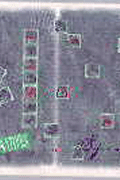As metropolitan areas across America expand and as haphazardly planned residential and commercial developments spread from city to suburb and beyond, the result is often the kind of sprawl associated with low-density, auto-dependent growth.
Some familiar characteristic of sprawl are traffic congestion, featureless housing tracts, congested retail centers that lack aesthetic distinction, and the draining of vital resources from older city neighborhoods. These problems stem from the complex interaction of public policies and individual choices. Proposed alternative forms of growth that promote clustered housing and transit-oriented development offer promise, but still face stringent tests in the economic and political marketplaces.
The American landscape has been absorbing suburban development for many decades, but the search for methods of controlling sprawl and finding less destructive patterns of growth has taken on new urgency in recent years. This report addresses that concern by presenting the ideas, research findings, and recommendations of some fifteen experts, including urban planners, architects, economists, and policymakers, who participated in a recent conference sponsored by the Brookings Institution, the Lincoln Institute of Land Policy, and the National Trust for Historic Preservation.
Author

